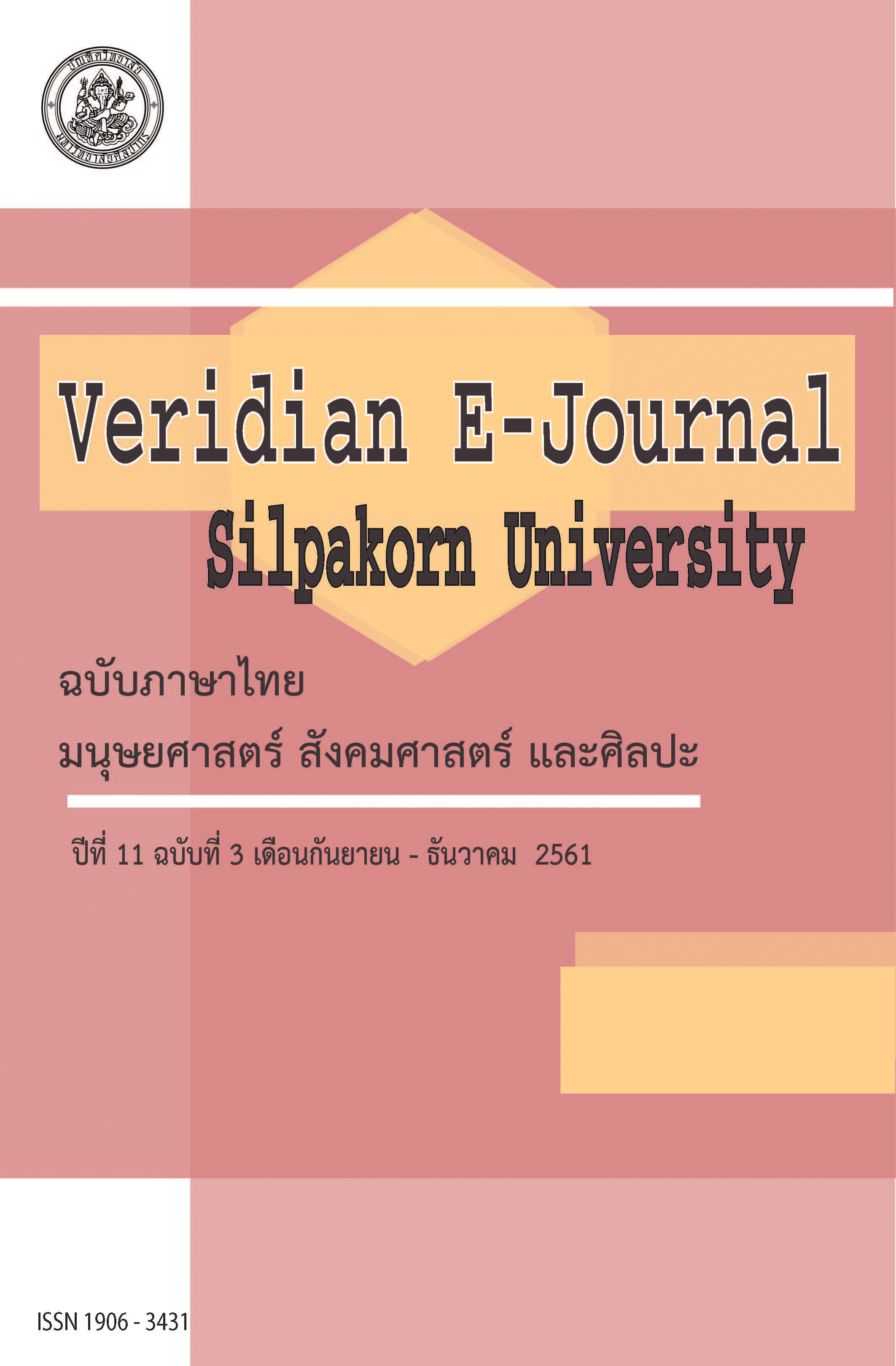การสร้างสรรค์นาฏกรรมตามนโยบายการปกครอง (The Creation of Performing Arts by Public Policies)
Main Article Content
บทคัดย่อ
บทความฉบับนี้มีวัตถุประสงค์เพื่อศึกษาการสร้างสรรค์นาฏกรรมตามนโยบายการปกครอง ขอบเขตการศึกษาเน้นที่รำวงมาตรฐานตามนโยบายการปกครองของจอมพล ป.พิบูลสงคราม โดยศึกษาจากเอกสาร การสัมภาษณ์ การสังเกตการณ์ การฝึกปฏิบัติจากผู้เชี่ยวชาญ และประสบการณ์ของผู้วิจัย ผลการศึกษา พบว่า นาฏกรรมตามนโยบบายการปกครองมี 2 รูปแบบ คือ นาฏกรรมที่มีเรื่องราว และไม่มีเรื่องราว เมื่อบ้านเมืองเกิดวิกฤตจากสงครามโลกครั้งที่ 2 ลัทธิการปกครองแบบสังคมนิยม เผด็จการทางทหาร ลัทธิสตรีนิยม และลัทธิชาตินิยม จอมพล ป.พิบูลสงคราม นายกรัฐมนตรีในสมัยนั้นมีแนวคิดการพัฒนาชาติสู่ความศิวิไลซ์ตามแนวคิดตะวันตก หรือ “ไทยใหม่” จึงนำรำโทนมาพัฒนาเป็นรำวงโดยกรมศิลปากร ต่อมาปรับปรุงเป็นรำวงมาตรฐาน เพื่อเผยแพร่นโยบายการปกครองขณะนั้น การสร้างสรรค์ปรับเปลี่ยนโดยผสมหลักลีลาศ การแต่งกายแบบสากลตามรัฐนิยม ดนตรีไทยผสมสากล บทร้องประพันธ์ขึ้นใหม่ สาระสำคัญกล่าวถึง การสร้างชาติ เอกราช วัฒนธรรม สภาพบ้านเมืองที่สงบสุข การยกย่องสตรี และทหาร ท่ารำนำมาจากแม่ท่านาฏกรรมไทยแบบหลวง เพื่อแสดงวัฒนธรรมของชาติ และความศิวิไลซ์ การจัดแสดงกำหนดให้ข้าราชการรำวงทุกวันพุธ และแสดงก่อนลีลาศ ทำให้นาฏกรรมเผยแพร่อย่างรวดเร็ว และเป็นที่นิยมของประชาชน ซึ่งมีผลกระทบต่อการเปลี่ยนแปลงค่านิยม พฤติกรรม อุดมการณ์ ของบุคคล และสังคม การยกระดับนาฏกรรมพื้นบ้านสู่นาฏกรรมของรัฐ การกำหนดมาตรฐานของชาติโดยกรมศิลปากร การอนุรักษ์นาฏกรรมเดิม และพัฒนานาฏกรรมขึ้นใหม่ การบรรจุในหลักสูตรการศึกษา การจัดแสดง การประกวด และการเลื่อนวิทยฐานะ ส่งผลต่อการแพร่กระจายของนาฏกรรมตามนโยบายการปกครอง เพื่อปลูกฝังวัฒนธรรมในระยะยาว
This article aims to study the creation of Performing Arts according to governmental policies, focusing on Rum Wong Mattratan developed by the policy of Field Marshal Plaek Phibunsongkhram. Mixed research methodology was used in the study. The results showed that, the crisis of World War II, the change of Political, and the Nationalism encouraged Field Marshal Plaek Phibunsongkhram, the Prime Minister at that time, to embrace development to civilization by Western concept, called "the New Thai". With this, Ram Thon folk dance was standardized as Thai classical dance by the Fine Arts Department to propagate governmental policies. The dance was developed by integrating Western dance, modern garment defined by state convention, and Thai traditional music mixed with Western music. Dance postures were defined using royal Thai traditional dance. The lyric was newly created emphasizing concepts and practices of nationalization, cultural identification, and civilization. Government officials were required to perform Thai classical dance, followed by Western dance, every Wednesday. This resulted in the widespread of the dance to finally become popular among nation, which in turn affected values, behavior, and ideology of individual and society. By the standardization of Performing Arts, definition of national standard by the Fine Arts Department, conservation of original arts and development of new ones, installation of the arts into educational curriculum, exhibitions, contests, and promotion of academic standing, all of these have an influence over the propagation of Performing Arts according to governmental policies to implant cultural awareness in the long run.

